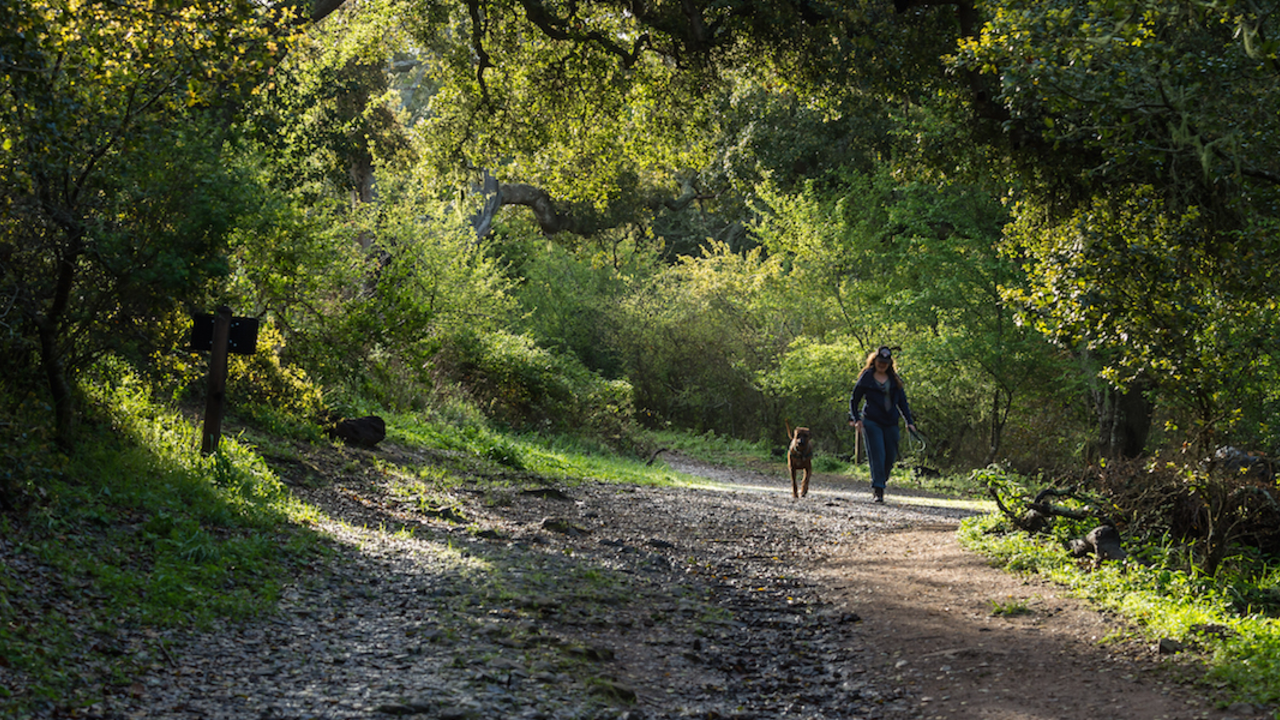Critical Mast: The Boom and Bust of Acorns

Alison Taggart-Barone/Parks Conservancy
Oak trees stand huge in our landscapes. At Oakwood Valley I walk under the unofficially named “Grandmother Tree.” If you have walked in the valley you know what I’m talking about. Oak trees are the foundation of the ecosystem they are found in, providing food and shelter for many species. There are squirrels, scrub jays, and acorn woodpeckers that store acorns for food. There are turkeys, mule deer, and wild pigs that eat the acorns off the ground.
At Oakwood Valley I stopped to see if I could count how many acorns I could see in the Grandmother Tree. I never have done this before. Scientists studying oak trees across California spend a large amount of time counting acorns. What they have found is that for most years acorn production is low and sometimes non-existent. This is because acorn production requires a great expenditure of energy—energy usually better spent on growth.
Every five years or so, on a not-so-regular basis, an oak tree will decide to stop growing and put its precious energy into acorn production. And enormous quantities of acorns are created by the oak tree. This is the natural boom and bust cycle of an oak tree.
What is amazing to me is that oak trees don’t produce these boom and bust cycles alone. Across the whole state of California, by a mechanism that baffles scientists, oak trees synchronize their acorn production booms. This mysterious synchronization of seed abundance is called a “seed masting.”
These seed mastings, or just mastings, do not happen with just one kind of oak tree, but with all kinds of oak trees synchronizing together. Masting is being studied by the University of California and many other universities. Oak groves from different species 178 miles apart have been found to synchronize their masting.
One hypothesis for masting suggests that it is a way to flood the ecological food market. If the oak trees over-produce at the same time, then all of the acorn-loving critters can eat as much as they want and there will still be some acorns that survive to grow into trees. This boom and bust cycle has also pushed certain species to develop storage techniques to survive these boom and bust cycles. This is one of the reasons that squirrels, scrub jays, and acorn woodpeckers store seed as a way to weather these cycles of abundance.
No one knows for sure how these oak trees synchronize their boom cycles. Scientists know that some plants will release chemical signals into the air and trigger responses from nearby plants. But the distances at which oak mastings occur are too great for this to be likely. Another idea is that pollen could carry the signals needed to cause oak masting across the state. While windblown pollen does travel quite far, the distance is still too great. Right now the most likely theory is that the trees are picking up on some climatic condition that signals them to mass. Scientists are currently looking into many of the possibilities.
Next time you are out in the Golden Gate National Parks in the fall, look up into the canopy of one of your favorite oak trees. Notice how many acorns you see growing. One of these years (and no one knows when), you will be caught by surprise and wonderment at the oak masting you just discovered happening across the state.